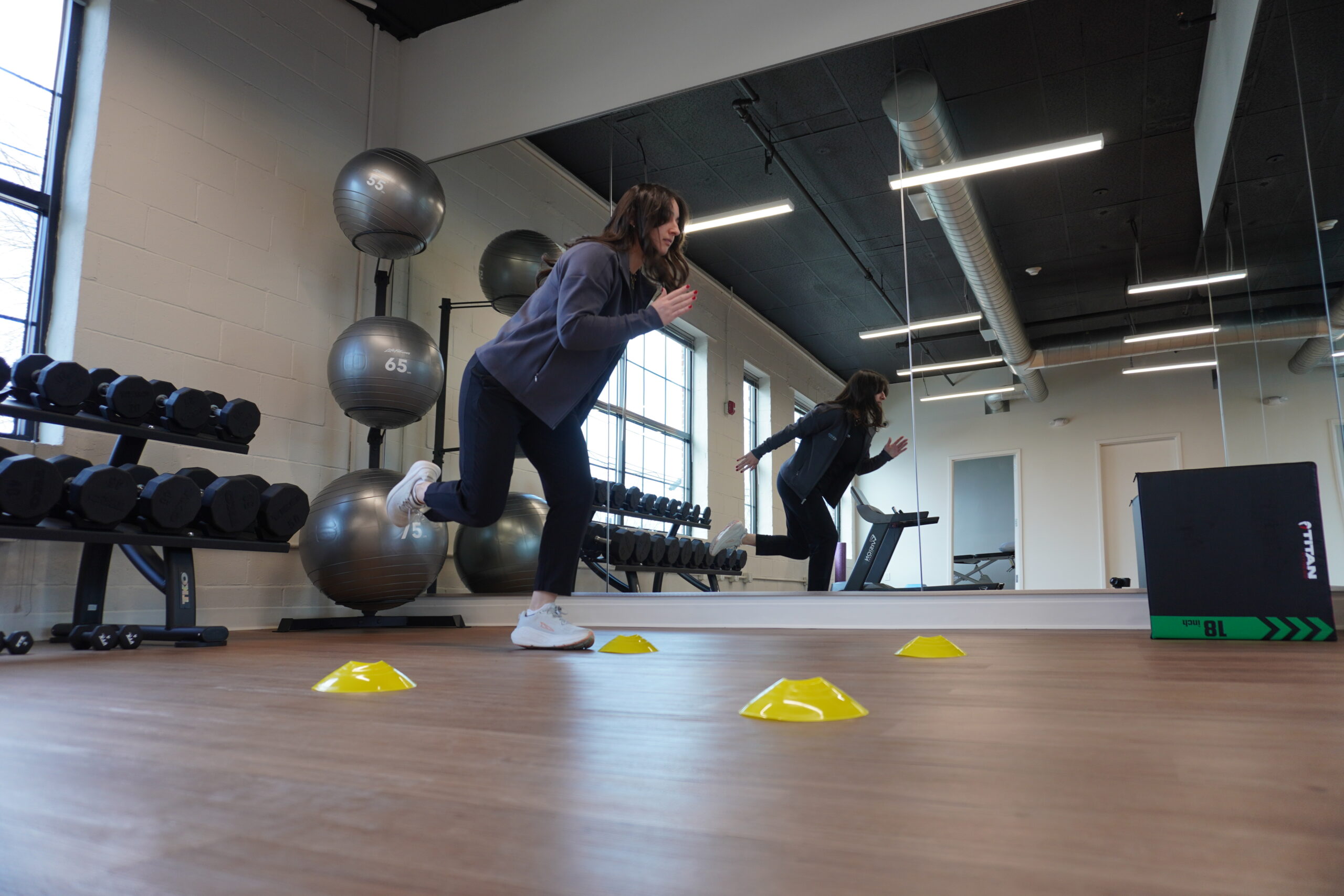What is Plyometric Exercise?
Plyometric exercise is a type of training that involves explosive, high-intensity movements that increase power, speed, coordination, and reactivity. Typically we see a slow movement (eccentric phase) followed by a quick movement (concentric phase). Some examples of plyometric exercises include jumping, hopping, and quick footwork drills.
Most often, we see these exercises being utilized in athletic training programs for sport performance. However, these exercises are very valuable for most individuals! In this blog, we’ll touch on a few ways plyometric exercises can support daily life, not just sport performance.
Examples of How Plyometric Exercise Can Impact Daily Life:
- Moving quickly to cross the street
- Catching yourself from falling after tripping on an uneven sidewalk
- Responding to quick changes in direction during a tennis match or other recreational sport
- Supporting bone health for individuals with osteopenia, helping to maintain or improve bone density and reduce fracture risk
- Reacting to sudden movements while walking a dog that pulls or changes direction
Plyometric Exercise Improves Bone Health
Strategically incorporating plyometric exercise into your program can help improve bone health! Performing quick, high-impact movements creates a large force throughout the body, stimulating bones and muscles in a way that creates more resilience within each system. It has been shown that high-impact plyometric exercises improve bone density in the femoral head (hip) and lumbar spine (lower back) most notably.
This can be particularly helpful for individuals with osteopenia or osteoporosis (low bone density), which is common as we age and in women postmenopause.
Note: it is essential to speak with your physical therapist about incorporating these exercises into your routine! In individuals with decreased bone density, we must be careful to load the bones just the right amount to make them stronger and not increase the risk of injury. Schedule with one of our Doctors of Physical Therapy here if you think this might apply to you.
Plyometric Exercise Improves Reactivity
Plyometric exercise involves being able to react and move your body quickly. Training quick movements of your feet or reactive movements allows you to train your brain and your muscles to react & move faster than typically resistance training requires.
Improving reactivity and speed can be very valuable in daily life. These skills can even help to prevent falls. For example, if someone were to trip while walking, they would need to be able to react very quickly and move their leg into the correct position to avoid falling. This type of training conditions your body to respond quickly, which can help you stay safe in unexpected situations.
Why This Matters
At BEYOND Physical Therapy, we focus on helping individuals move well for the long-term. We encourage all of our patients to begin working on their long-term physical health to stay active and independent for years to come. If you’d like to get started on your fitness journey, reach out to us at the link below.
—
Sources:
PMID: 36895528
PMID: 37036542


